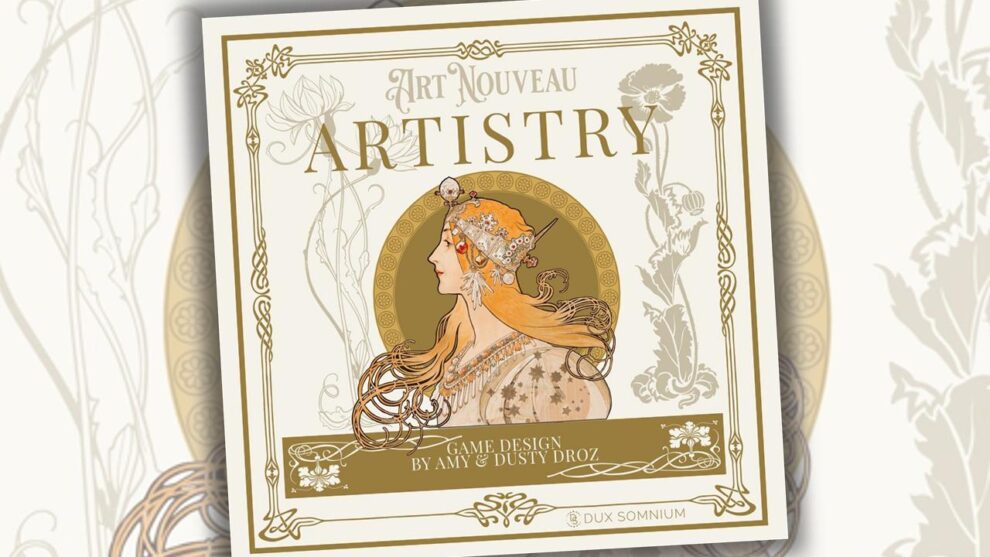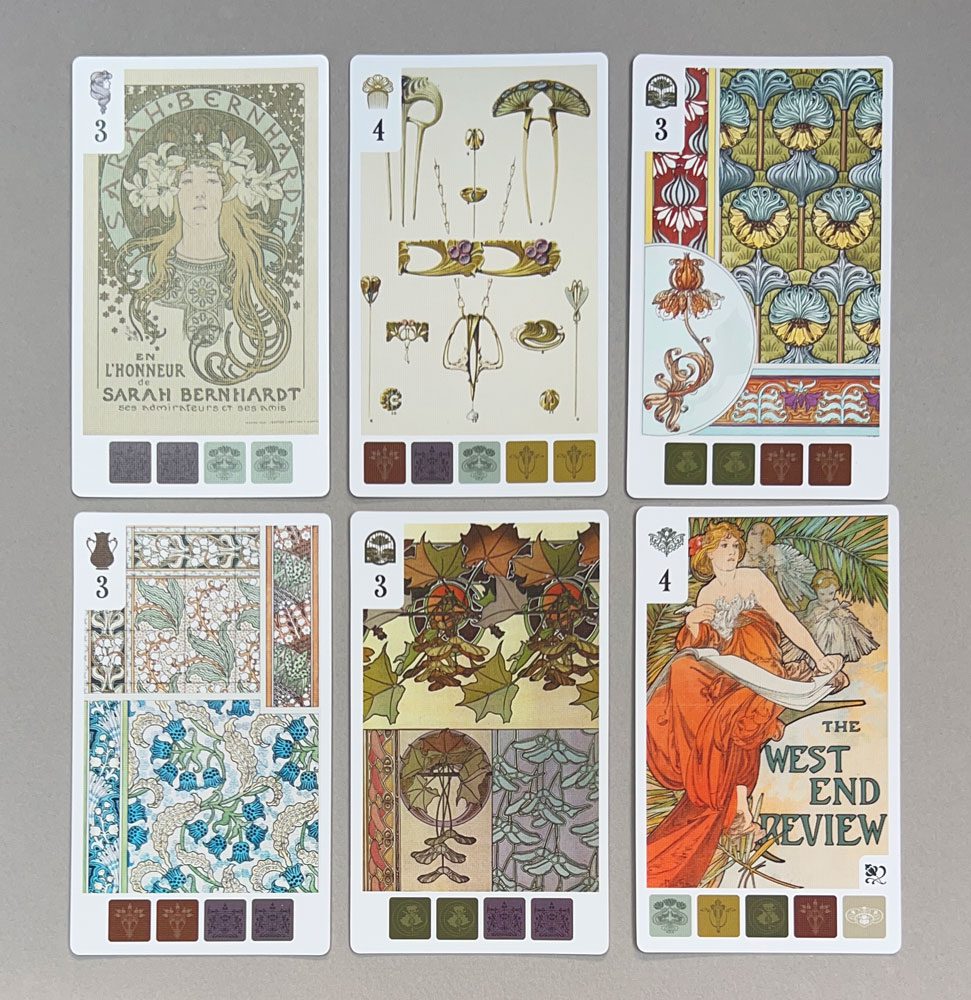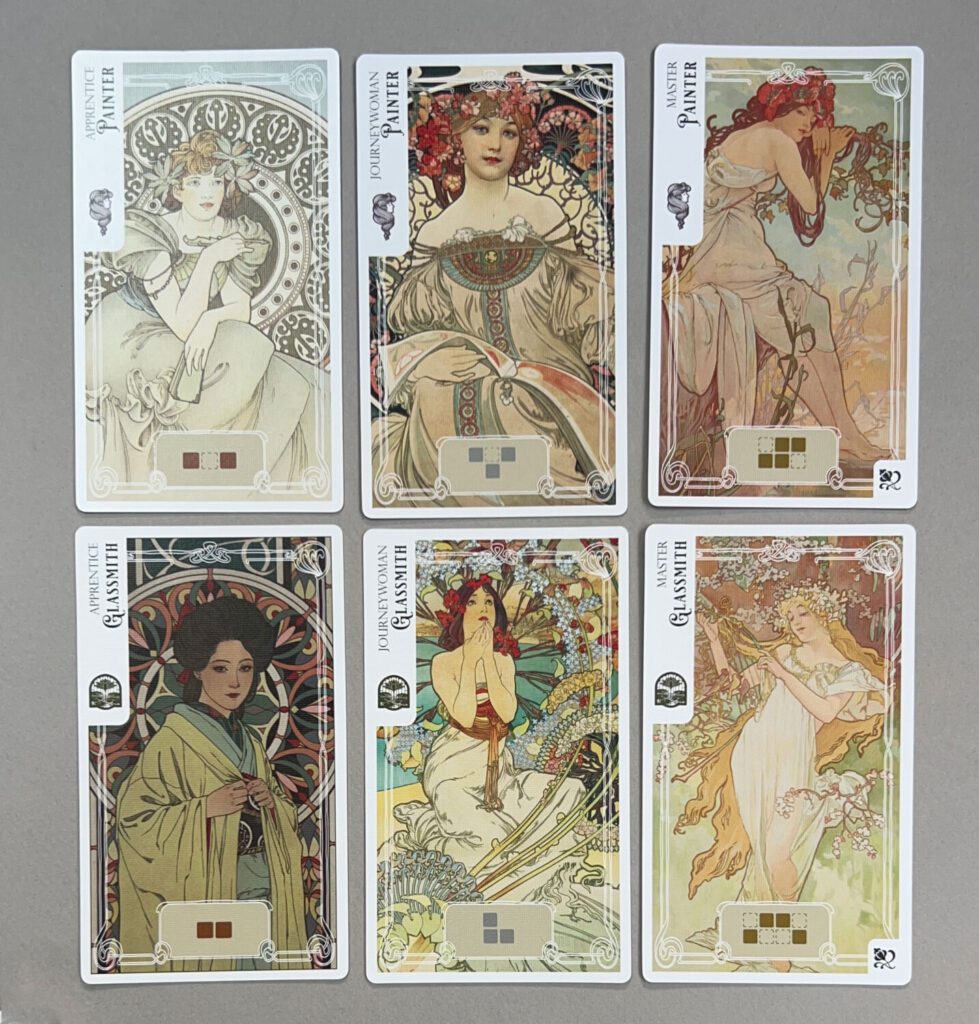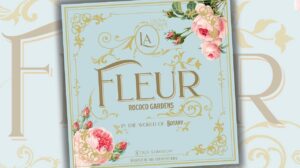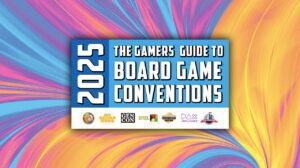Outside the Artists’ Studio
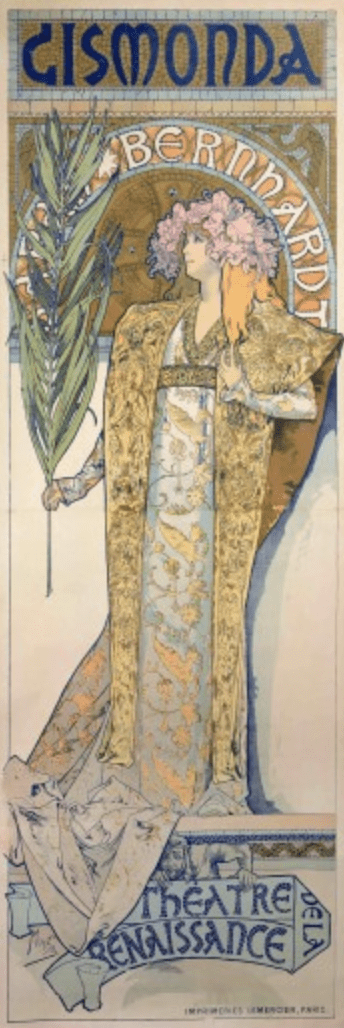 You may not know who painted this famous poster of the French actress Sandra Bernhart, but you probably recognize the artistic style. Art Nouveau, with its flowing lines and ethereal subjects, sought to reunite art with life. In short, it wanted to bring art to the people.
You may not know who painted this famous poster of the French actress Sandra Bernhart, but you probably recognize the artistic style. Art Nouveau, with its flowing lines and ethereal subjects, sought to reunite art with life. In short, it wanted to bring art to the people.
The best-known of the painters was Alphonse Mucha. Mucha’s art depicted elongated female figures, often framed by intricate patterns of flowers. His early work was done in poster-sized advertisements, but as his fame grew, the wealthy commissioned him to create more elaborate works. He was quite prolific, as the artist cards in the game will show you.
Art Nouveau’s influence spread throughout the arts, from painting to jewelry to textiles to fabrics, as you will see in Dux Somnium Games’ Artistry. Here, you are opening a grand studio for artists of all types—provided you can acquire the materials necessary to attract more and more experienced artists in each field.
As your studio’s work improves, you will gain Prestige. The first player to reach 20 Prestige points triggers the end of the game. After all players have taken the same number of rounds, all points are tallied up and the player with the most Prestige wins.
Setting up the Studios
Setting up Artistry involves several steps:
- Place the Market Board in the middle of the table.
- Sort the Artisan Cards into their five piles based on the art type, apprentices on top, then journeywomen, then the master card.
- Randomly assign an apprentice to each player. This is their starting Artisan.
- Shuffle the pattern deck and place it face-down near the play area. Deal out five random patterns as the Pattern Market.

Perhaps one of the elements of Artistry that makes it such a visually appealing game are the Art Neuveau works depicted on the Pattern cards. The tiles depicted along the bottom of the Pattern cards show how many of which tiles you need to collect from the Market board to acquire the card. - Shuffle the inspiration deck and place it face down near the play area. Deal out three random inspirations as the Inspiration Market.
- Place the Renown Tracker Board near the play area. Each player selects a color and places their tracker on the board.
- Place the Material Tiles in the bag and shuffle them up. Ensure that there is a place for the used tiles (the Remnant Pile) near the play area as well.
- Select the first player and give them the First Player Marker.
Setup is complete.
Putting Those Apprentices to Work
As with the previous releases from Dux Somnium, the game play of Artistry is not complex. The game is played in rounds, with each round broken into player turns.
At the start of the round, the market board is populated with material tiles from the bag. The number of tiles to be used is determined by the player count: 16 tiles in a 4×4 grid for two players, 25 tiles in a 5×5 grid for three players, 36 tiles in a 6×6 grid for four players. If the bag is ever empty, refill it from the remnant pile.
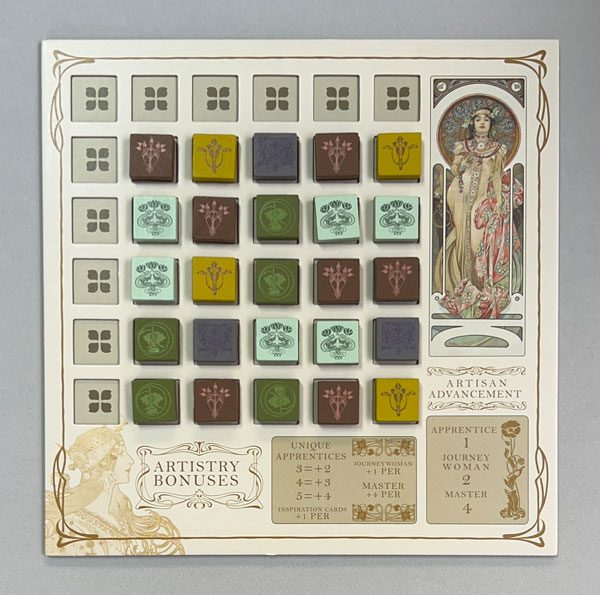
- Starting with the player with the first player marker, players take their turns by performing one of the following actions:
-
- Acquire Material Tiles: each artisan card has a grid pattern shown at the bottom. When a player chooses this action, they select one of their Artisans and takes a number of tiles from the Market Board as shown on the grid pattern. The tiles selected must match the exact number and pattern shown, or the tiles cannot be selected. Also, each player is limited to 10 material tiles! If the artisan chosen would result in having more than 10, that artisan cannot be used.If the player acquires the last tile from the Market Board of a color matching the one shown on an inspiration card, they acquire that card. Players may play any number of their inspiration cards each turn, but each can be used only once per round. When used, they are turned face-down to indicate they are no longer available.
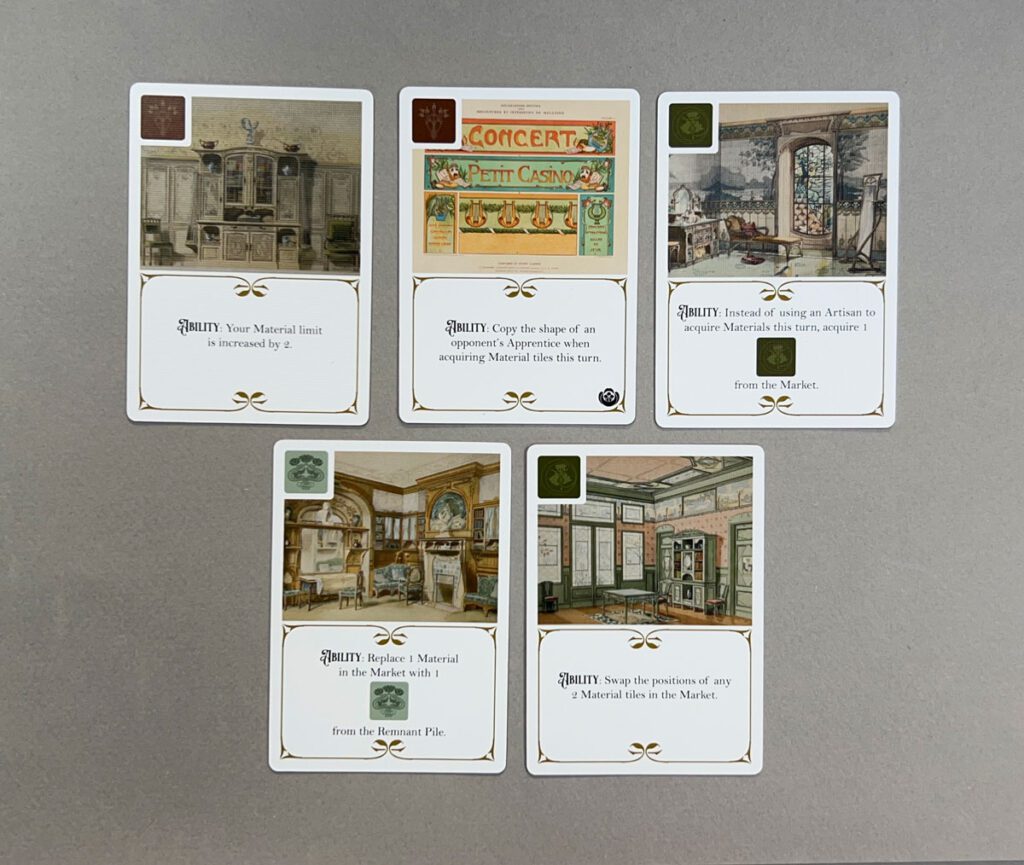
- Purchase a Pattern: pattern cards are the main way to acquire renown. Each has a set of materials shown at the bottom of the card (the cost) and a number at the top (the renown). Players spend their acquired materials, discarding them to the remnant pile to acquire these cards. Any material in the cost can be substituted with three other tiles, if need be.When a player purchases patterns, they also check to see how many patterns of a particular art type they have collected. If they now have one pattern of an art type, they also acquire an apprentice artisan of that same art type. If they have two patterns of an art type, they also acquire a journeywoman of that same art type. If they are the first to have four patterns of an art type, they also acquire a master of that same art type. Each player may only have one of each skill level artisan of each art type.

Apprentice, Journeywoman, and Master Artist cards for Painters and Glassmakers. The pattern on the bottom of each card shows how many Market tiles in that specific pattern the player can claim on a turn. The more advanced the craftswoman, the more tiles they can claim. - Pass: players may pass if they have no actions they can or want to perform. Once a player passes, they take no further turns this round. When all players have passed, the round ends.
At the end of the round, the following steps are performed:
- Clear the market board of all unclaimed material tiles. These are discarded to the remnant pile.
- Refill the inspiration market to three cards.
- Reset all player inspiration cards so that they are available in the next round.
- Check to see if any player has 20+ renown. If they do, the game is over and final scoring begins. If nobody does, the next round can start.
Final scoring adds to the renown acquired during game play. The additional renown points are:
- Players who have 3+ apprentice artisans gain bonus renown equal to the number of apprentices they have minus one.
- Players gain a bonus renown point per journeywoman artisan they have.
- Players gain four bonus renown points per master artisan they have.
- Players gain a bonus renown point per inspiration card they have.
The player with the most renown is the winner. Ties are settled first by the player with the fewest remaining material tiles, then the most artisans. If there is still a tie, the players share the victory.
A Conversation Between Friends
Prior to writing this review, Tom and David had a conversation about their experiences with Artistry. Below is the substance of that conversation, with some editing for clarity.
KDL: Overall, I think Artistry is a decent game. It is not nearly as good as their earlier releases. It has the potential to be a 4.0+ game if some things were fixed and/or tweaked. Such as, why in the world did they use two symbols for each art type? This is exceedingly confusing. Add to that, the fact that the contrast on several of the tiles is not nearly enough.
TMF: This was our major complaint. I backed the wooden tile version, and even at a table with good lighting all three of us struggled to identify some colors, both on the tiles (the brown/magenta and the indigo/purple in particular) and the pattern cards. The latter we had to pass around the table for confirmation at one point.

One of my friends commented, “This must have been made by twenty-somethings with good eyesight who only used their twenty-something friends as playtesters.”
Hard to argue with that one.
KDL: The color arrangement (dark on light, or vice versa) needs to be the same on the tiles as on the cards (e.g., see the purple symbols)
TMF: Symbols on the tiles should definitely be the same as on the cards. They also need to be in better contrast with the background color. The indigo/purple tiles are particularly bad.
KDL: The Inspiration Cards, at least in a two-player game, are far too easy to accumulate. In our first game, I had 8+ at the end of the game. Either limit players to one inspiration card per art type, or do not allow these to be worth points. Or both.
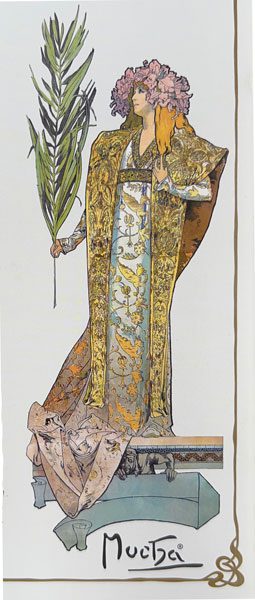 TMF: Given that most Inspiration cards allow you to change the configuration of the tiles in Marketplace, I think we should only allow them to be used once per game, not once per round.
TMF: Given that most Inspiration cards allow you to change the configuration of the tiles in Marketplace, I think we should only allow them to be used once per game, not once per round.
In our three-player game, one person earned a Master card. As a result, he could take four tiles off the board at a time. He was racking up the pattern and inspiration cards—his added score from those Inspiration cards won him the game by two points.
I think both should be one-use only cards (instead of once per round) and/or not be worth end-game Prestige.
KDL: Agreed. I think the idea that a Master will get you four materials each turn and is worth 4 points at the end is overkill. I truly believe that in a given round, each Artisan a player has needs to be limited to one use–flipped face-down, like the inspiration cards. A new round should then start as soon as players pass, which in the early game, will be because the player has run out of artisans.
TMF: One of my group asked a similar question. However, this would mean in the first round, everyone would get one turn. I did try a variation that we discussed in our second game.
In that game, we added some house rules: the first was to play to 30 points instead of 20, and we limited the use of worker cards to once per round. This made the game feel a bit too long. (I think playing until 25 is the sweet spot here) With the accumulation of Journeywomen, Masters, and Innovation cards, it felt to me like some players’ engines were just too strong.
We also added a rule that stated as soon as a player gained four worker cards, they could only play each one once per round. This made for an interesting decision space. However, a round or two later, these players would end up with more cards than they could play in a single round, defeating the purpose. (Unfortunately, my group rejected the idea of playing through your entire hand of worker cards before being able to reclaim them. I still like this idea.)
KDL: I think a player can choose to pass, and wait until the others do as well. No need to force worker usage. The limit of 10 materials at any time will mean some purchases will be made, no?
Moving on to scoring (in general). At least in a two-player game, the scores seem to remain within 1 or 2 points of each other throughout the game until final scoring. Is this a flaw? Is it too soon to end the game at 20 prestige?
TMF: Scores were within 5-ish points of each other throughout our three-player games. They tightened up with the end-game bonus scoring. I’m not sure this is a flaw. I think this just means this is a tight game.
KDL: Is the fact that score and reputation are the same (as it is in La Fleur) a bigger problem here? I really think that they should be two separate things (as it is in Botany). The game as it is right now feels very linear. Does this game need more art types in order to be more interesting overall ? I’m not sure.
TMF: I don’t think so. Five artistic categories feels right to me. Personally, I’d rather have clearer icons on the tiles.
KDL: Most definitely. I would also say some work needs to be done on the rulebook. For example; the end-of-round instructions need to have the passing of the first player marker as its own line item. Putting it in the End of Game line hides it. I knew this token had to be passed as the game went on, but finding that rule was a bit of a pain in the keester.
TMF: This game is not color-blind friendly. Period. It’s not that easy for color-sighted people of a certain age, either.
I will say that despite Artistry’s many failings, the artwork was exceptional. Using Mucha’s (and Mucha-inspired) posters and paintings on the tarot-sized cards (thank you for that, too!) made Artistry one of my best-looking games to date.
Final Thoughts
Tom
During our first playthrough, my initial impression centered on our difficulty in telling some colors apart, both on the Marketplace board and on the pattern cards. In subsequent plays, we acknowledged that difficulty but focused more on the game play.
My opinion of Artistry has risen slightly thanks to those additional plays. There’s no denying the artwork is beautiful (I’ve been a Mucha fan for decades) and is well-used throughout the game. However, the game itself is lackluster. As a game, it’s fine, but nothing really stands out about it, other than the art. In fact, if the game had different art, I doubt I would have been so interested in trying it.
This comes back to game design and proper playtesting. Even with the House Rules we started including in our second game, we knew the game needed further refinements. (Psssst, Dux Somnium, if you’re looking for playtesters for future games, consider David and I!)
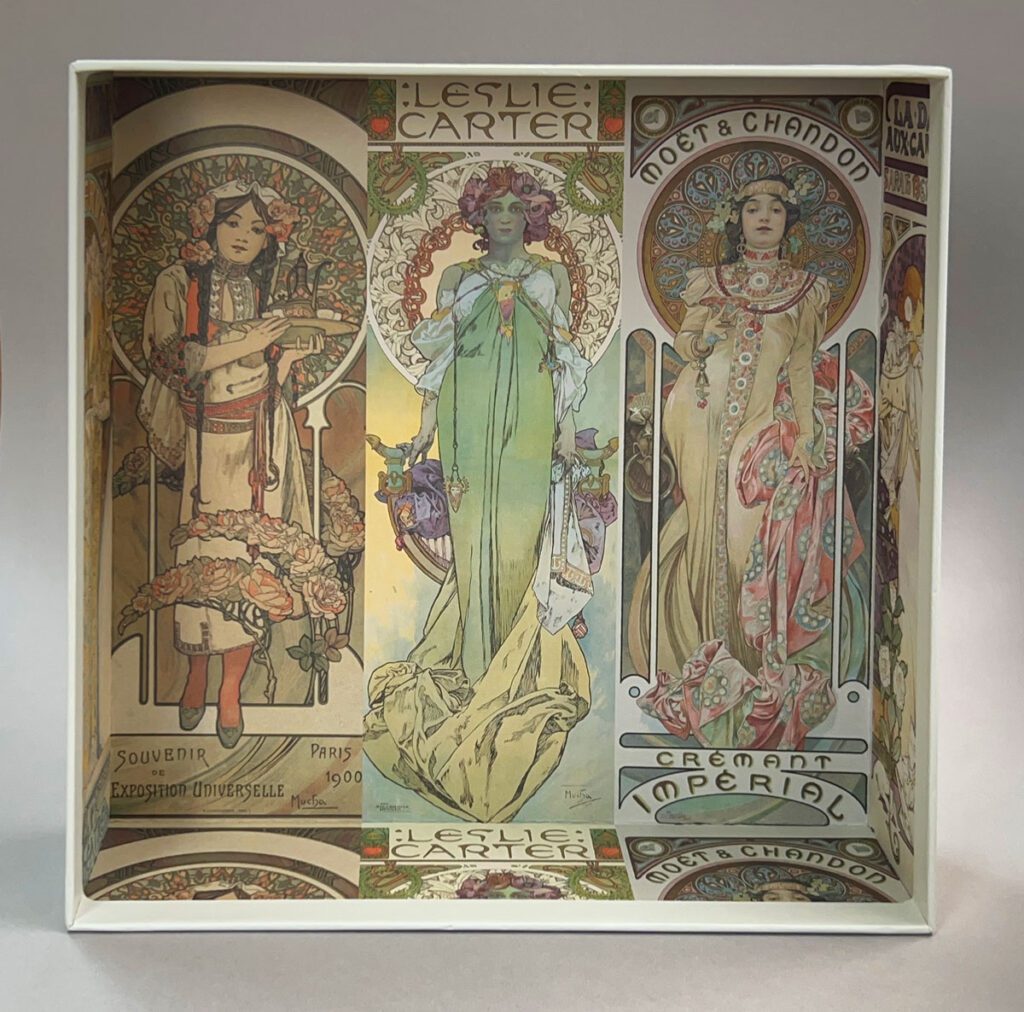
David
I have reviewed the other games from Dux Somnium. Botany received a well-deserved 5-stars. La Fleur also garnered 5-stars, but that is because (despite its flaws) it exceeds 4.5-stars in my mind. Of the two, Botany is the better game. As far as Artistry is concerned, not even close.
The game is truly gorgeous, but has vision issues that should never have made it to production. The gameplay feels like something that was put into a kiln and removed too early. In other words: this game needed more time in playtesting! Someone surely should have spotted the problems with the material tile contrast, the confusion caused by the difference between the material and artwork icons, and so on. Anyone with vision issues will be well advised to skip this one.
At its core, a wonderful game exists within Artistry. But each turn lacks the kind of think-y moments that both of their previous games have (again, Botany more so than La Fleur). Artistry needs constraints! For example: limit the use of the artisans to once per turn, or limit the use of each inspiration to once per game, or increase the cost of patterns so that they rise faster as the point values go up (alternatively, set the game-end trigger to a value higher than 20 Prestige). Something, anything, the create proper tension within the turn.
Oh, and as I said in my review of both the previous games, the game-end trigger and the points should be two separate things (Botany did this perfectly; La Fleur stumbled with this one; Artistry has an issue here that I believe cannot be ignored).
In conclusion, I believe Artistry is a game with potential. It’s time on my table, however, will be limited until the designers spend some time correcting a list of things: the vision-friendly issues being at the very top of that list.


